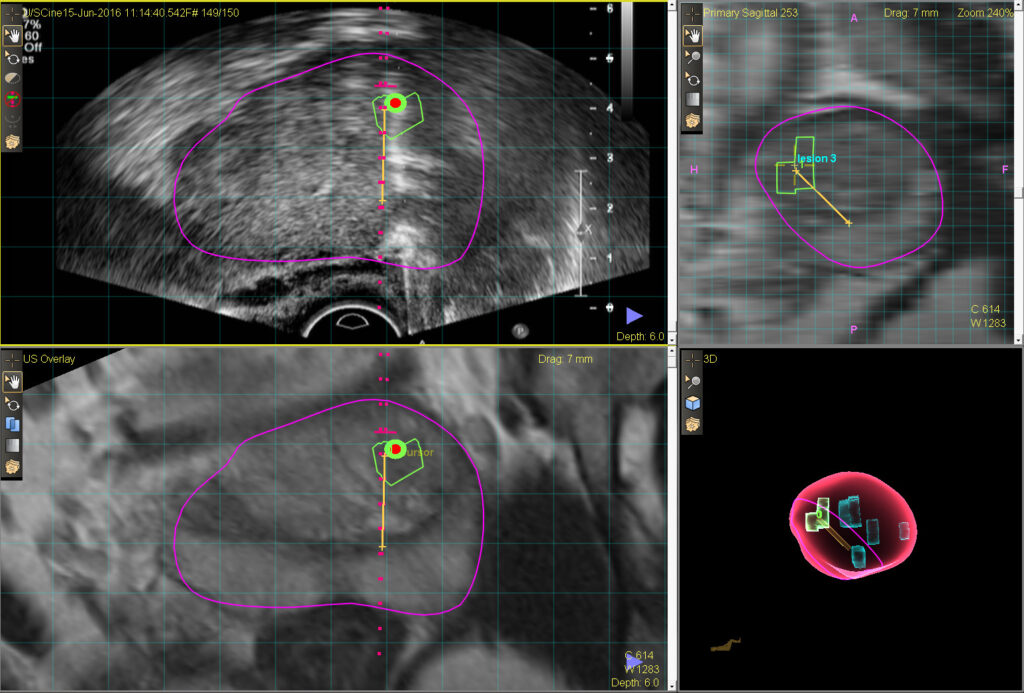Introduction:
Prostate cancer is one of the most prevalent malignancies affecting men worldwide, presenting a formidable challenge in the field of oncology. Accurate diagnosis and effective treatment are crucial, yet traditional methods have often fallen short of providing the necessary insights to manage this complex condition effectively. However, the innovative combination of Magnetic Resonance Imaging (MRI) and ultrasound has emerged as a game-changer, reshaping the landscape of prostate cancer care and offering new hope to patients and healthcare providers alike.
The Role of MRI in Prostate Cancer Diagnosis:
Conventional diagnostic approaches, such as standard biopsies, may overlook crucial details or yield false negatives, leading to delayed or inadequate treatment. In the face of these challenges, MRI has emerged as a powerful tool in the realm of prostate cancer diagnosis. With its exceptional resolution and tissue contrast, MRI excels in identifying suspicious lesions within the prostate gland, providing clinicians with invaluable insights to guide their decision-making process.
The Promise of MRI-Ultrasound Fusion Biopsy:
The true innovation, however, lies in the fusion of MRI with real-time ultrasound guidance, marking a new era in prostate cancer diagnostics. This revolutionary approach, known as MRI-ultrasound fusion biopsy, combines the detailed imaging capabilities of MRI with the dynamic visualization provided by ultrasound, enhancing the precision and accuracy of prostate cancer detection. By integrating pre-biopsy MRI findings with live ultrasound imaging during the biopsy procedure, clinicians can precisely target suspicious areas within the prostate, improving the yield of diagnostic biopsies and reducing the risk of sampling errors. This collaboration between MRI and ultrasound not only enhances cancer detection rates but also enables clinicians to tailor personalized treatment strategies based on the tumor’s specific characteristics.
Treating Prostate Cancer with MRI-Ultrasound Guidance:
The transformative potential of MRI-ultrasound fusion technology extends beyond diagnosis, as it also plays a crucial role in prostate cancer treatment. With precise tumor localization achieved through fusion imaging, clinicians can administer targeted therapies, such as focal therapy or brachytherapy, with unprecedented accuracy and efficacy. This targeted approach maximizes therapeutic benefits while minimizing damage to surrounding healthy tissue, lowering the risk of treatment-related side effects, and preserving patients’ quality of life.

Targeted biopsy of a suspicious area of the prostate
Ref: https://asui.org/fusion-biopsy/
Current Research and Future Directions:
A research team led by Dr. Steven Raman from the David Geffen School of Medicine at the University of California, Los Angeles, discovered that the procedure known as MRI-guided transurethral ultrasound ablation (TULSA), conducted by interventional radiologists, emerged as a promising substitute to surgery or radiation. Their findings revealed an impressive 92% continence recovery rate after five years.
Dr. Raman emphasized the significance of this image-guided therapy in effectively targeting cancer cells while minimizing harm to the prostate, achieving a comprehensive approach to prostate cancer treatment that ensures complete local cancer control while preserving urinary continence and potency. This statement was shared through a press release by the healthcare public relations firm Reis Group.
As research in MRI-ultrasound fusion progresses, opportunities for enhancing prostate cancer care continue to expand. Ongoing studies explore innovative applications of fusion technology, like multiparametric imaging and molecular targeting, paving the way for personalized, precision medicine approaches tailored to each patient’s unique needs. These advancements promise to refine diagnostic accuracy further, optimize treatment strategies, and ultimately improve patient outcomes.
Conclusion:
The collaboration between MRI and ultrasound represents a paradigm shift in prostate cancer management, offering enhanced precision and efficacy in diagnosis and treatment. By embracing this innovative approach, healthcare providers can revolutionize prostate cancer care, ushering in an era of personalized, targeted therapies that optimize outcomes and improve patient well-being. As we continue to explore the transformative power of MRI-ultrasound fusion, we are poised to redefine the future of prostate cancer management, guided by a steadfast commitment to excellence and a relentless pursuit of better patient care.




